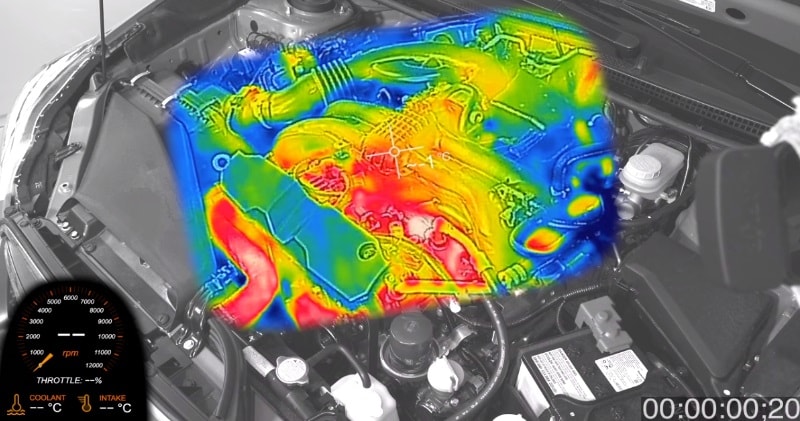In this video we’re going to be cold starting the engine of my 2016 Subaru Crosstrek, and using a thermal camera we’re going to watch the engine heat up. The ambient temperature is about negative 6 degrees Celsius or about 22 degrees Fahrenheit.
source/image: Engineering Explained
As far as metrics we’ll be monitoring, we’ve got overlays of the engine RPM, which will run higher when the engine first starts to help warm things up. We also have throttle position, the coolant and intake air temperatures, the temperature of where the thermal camera is centered, and a timestamp so we know how long the engine has been running. read more: Engineering Explained
If it’s freezing outside and you don’t want to get in a frozen car, no one’s going to fault you for warming up the engine and making sure it’s comfortable inside, as well as making sure the windows are defrosted so you’re ready to roll. In my video I was purely discussing what’s happening from a mechanical standpoint when you let your engine sit and idle.
Advertisement
Oil can actually flow at very low temperatures. You may be freezing, but for certain viscosity grades cold temperatures aren’t a huge deal.At about 5 minutes and 20 seconds, when the coolant temperature reaches 50 degrees C, you’ll notice the engine RPM starts to significantly drop, eventually getting down to 800 RPM when the coolant reaches 60 degrees C.











